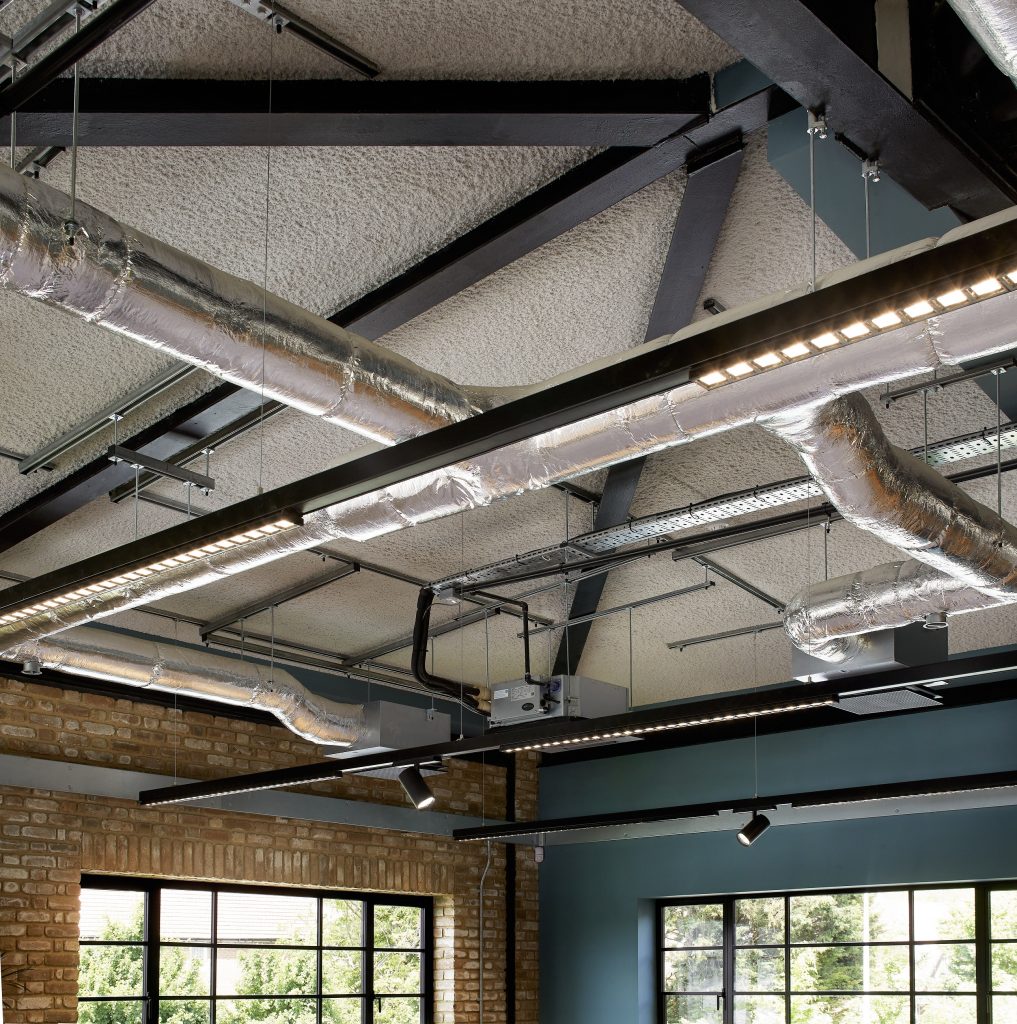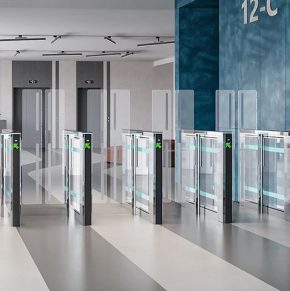
GUEST ARTICLE: Designing for Harmony – How Acoustics Shape the Modern Workspace
The workspace landscape has seen a seismic shift in the last few years, with evolution in hybrid and flexible working arrangements. Employees now look to balance time between the office, where they collaborate with colleagues, and the quieter environment of their home. However, as work patterns continue to evolve, employers are increasingly seeking more in-person interaction from their teams. As evidenced by a recent Virgin Media Business Mover report, which found that nine in ten UK office workers are subject to compulsory attendance policies, as employers demand they return to their desks more days each week to boost productivity levels. Yet, the productivity gains of this remain unclear as businesses continue to neglect the shifting demands of employees and the expectations of their workplaces. This guest article from Ben Hancock, MD at Oscar Acoustics, explains more…

A productivity imbalance?
Employee demands are rooted in the suitability of working environments – as extra personnel are once again turning offices into a hive of activity, bringing with them spiralling noise levels. That said, a greater emphasis is now on developers to ensure they create spaces that can attract staff to want to return by delivering environments that replicate home comforts.
And while acoustic design is often an afterthought in commercial spaces, it plays a vital role in supporting the comfort and well-being of staff. For those working in the design and construction of workplace settings, turning a blind eye to the importance of noise management for a healthy working environment is now unavoidable.
Going further, our 2025 research, which surveyed 2,000 UK office workers, outlined that fact. The data uncovered that unacceptable noise levels continue to be a significant factor in driving staff away from the office and diminishing productivity. More than a quarter (26%) of respondents cited excessive noise as the reason for producing ‘poor quality work’ and experiencing a decline in job performance. Moreover, some have been forced to work outside of contracted hours to compensate for the time lost due to a lack of concentration.
Acoustically balanced
The good news is that it doesn’t need to be this way, and the industry does have the tools on hand to address this widespread problem. One of the most effective methods is through the use of premium acoustics sprays, which can be applied to walls and ceilings and most substrates, making them suitable for a wide range of office workspaces and designs. They have become a popular choice for specifiers due to their ability to ‘soak up’ sound energy rather than allowing it to reverberate freely.
These types of sprays also complement the growing use of dividing structures and pods used for collaboration and brainstorming. Without impacting design schemes, they allow complete flexibility with Cat A and Cat B without disrupting the acoustic spray finish on the ceiling above.
Meeting the standard
Premium acoustic sprays do more than just turn down the volume; they contribute towards many sustainable design and health certification systems, including BREEAM, SKA, Living Building Challenge, and add up to 17 points towards the LEED (Leadership in Energy and Environmental Design) rating of a project. They’re also GREENGUARD Gold Certified, which is important given the recent focus on air quality, so it’s important to choose sprays that have been third-party tested.
With fire safety also front and centre, it’s important to note that not all products are created equal. It’s imperative that developers use acoustic sprays that go above and beyond Approved Document B fire requirement (Class 0 to BS476 & B-s1, d0 fire rating) as they produce little to no smoke and absolutely no droplets, which can assist in the safe escape of office workers.
The road to success
Although acoustic sprays are a crucial component in solving the productivity challenge in the workplace, other strategies can help when designing for success. Rooms designed for focus areas and distraction-free phone calls, along with hybrid meeting zones that allow staff to interact freely and collaborate, must be made available.
As workspace layouts and designs continue to evolve, the impact on noise levels in the workplace must be brought to the forefront. Effective acoustic planning not only enhances productivity but also supports employee well-being by reducing stress and improving overall workplace happiness.
As the world of work reaches a fresh chapter, construction professionals can remain ahead of the curve, but that starts by giving the right care and attention to office acoustics. By delivering premium workspaces where employees can thrive, offices can remain fit for purpose, with the right foundations set for a healthy environment for staff across the country.
Latest news

17th April 2025
Nuaire shares expertise at Specifi Mechanical Services events in 2025
Indoor air quality and ventilation manufacturing specialist Nuaire is pleased to be exhibiting at the Specifi Mechanical Services events once again in 2025.
Posted in Air Conditioning, Articles, Building Industry Events, Building Industry News, Building Products & Structures, Building Services, Exhibitions and Conferences, Facility Management & Building Services, Heating, Ventilation and Air Conditioning - HVAC, Restoration & Refurbishment, Retrofit & Renovation
15th April 2025
West Fraser: CaberDek earns top marks from Home Counties carpentry specialist
A specialist carpentry sub-contractor covering housing sites across a large swathe of the Home Counties has come to value CaberDek from the West Fraser range for a variety of reasons: not least because the high quality panel product doesn’t destroy his operatives’ electric saws!
Posted in Articles, Building Industry News, Building Products & Structures, Building Systems, Case Studies, Restoration & Refurbishment, Retrofit & Renovation, Roofs, Timber Buildings and Timber Products, Wooden products
15th April 2025
GEZE: The Role of Access Control Systems in Enhancing Building Safety
Jane Elvins, Specification and Business Development Manager at GEZE UK, delves into the role of access control systems in enhancing building safety…
Posted in Access Control & Door Entry Systems, Architectural Ironmongery, Articles, Building Industry News, Building Products & Structures, Building Services, Doors, Facility Management & Building Services, Health & Safety, Restoration & Refurbishment, Retrofit & Renovation, Security and Fire Protection
11th April 2025
Don’t Do a Dave! It’s Time to Lock FIT Show 2025 in Your Calendar!
It’s that time again – FIT Show is back! You could be forgiven for thinking there won’t be much new to see when FIT Show returns to the NEC from 29 April – 1 May. Wrong!
Posted in Articles, Building Industry Events, Building Industry News, Building Products & Structures, Building Services, Continuing Professional Development (CPD's), Exhibitions and Conferences, Information Technology, Innovations & New Products, Restoration & Refurbishment, Retrofit & Renovation, Seminars, Training
 Sign up:
Sign up: